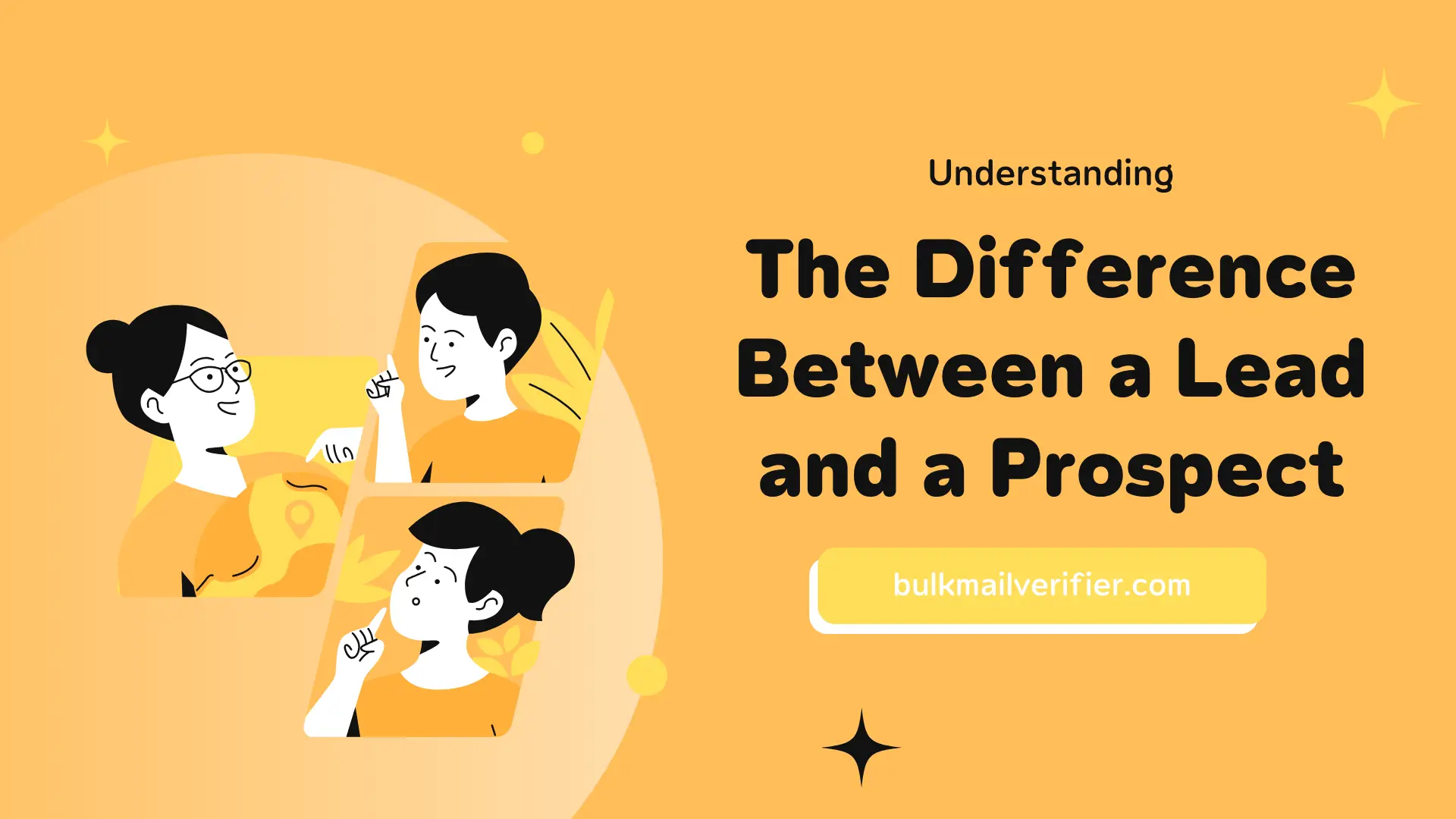Leads vs. Prospects: Key Differences Explained
 Published by Bulk Mail Verifier
Published by Bulk Mail Verifier
Introduction
In the dynamic world of sales and marketing, understanding the difference between a lead and a prospect is crucial. This knowledge not only helps in crafting effective marketing campaigns but also in optimizing the sales funnel for better conversion rates. In this blog, we will explore these differences and provide insights on how to leverage email validation services like BulkMailVerifier.com to enhance your lead generation strategy.
What is a Lead in Sales?
Lead generation is the cornerstone of achieving sustainable business growth. A lead is someone who has shown interest in your product or service but lacks sufficient engagement to be considered a prospect. Typically, leads are generated through:
- Website forms
- Social media interactions
- Email marketing campaigns
The primary goal with leads is to gather more information about their behavior and interests, which can be facilitated by using email validation services to ensure the accuracy of your contact data.
Who is a Prospect?
A prospect is a lead that has moved beyond initial interest and engaged in two-way communication with your business. This engagement indicates a higher likelihood of conversion. Prospects are identified by:
- Responding to emails or calls
- Showing interest in product demonstrations
- Expressing specific challenges that your product can solve
Leads vs. Prospects: Key Differences
Understanding the distinction between leads and prospects is essential for tailoring your marketing strategies:
- Leads are at the top of the sales funnel and require nurturing through targeted campaigns.
- Prospects have engaged in meaningful interactions, indicating readiness for personalized sales pitches.
How Should You Approach Them?
When dealing with leads and prospects, persistence is key, but it must be balanced to avoid being perceived as intrusive. Use email validation tools to ensure your communications reach the right audience, and tailor your approach based on their stage in the buying process.
Identifying the Needs of a Lead & a Prospect
For leads, focus on gathering accurate data and segmenting your audience using CRM tools. For prospects, emphasize the tangible benefits of your offerings and ensure your communications are personalized and timely.
Conclusion
Differentiating between leads and prospects is vital for optimizing your sales and marketing efforts. By using services like BulkMailVerifier.com, you can enhance your lead generation and conversion strategies, ensuring that your communications are precise and effective. Remember, the goal is to nurture leads into prospects and ultimately convert them into customers.
Call to Action: Enhance your email marketing strategy with BulkMailVerifier.com to ensure your leads are valid and ready for conversion.